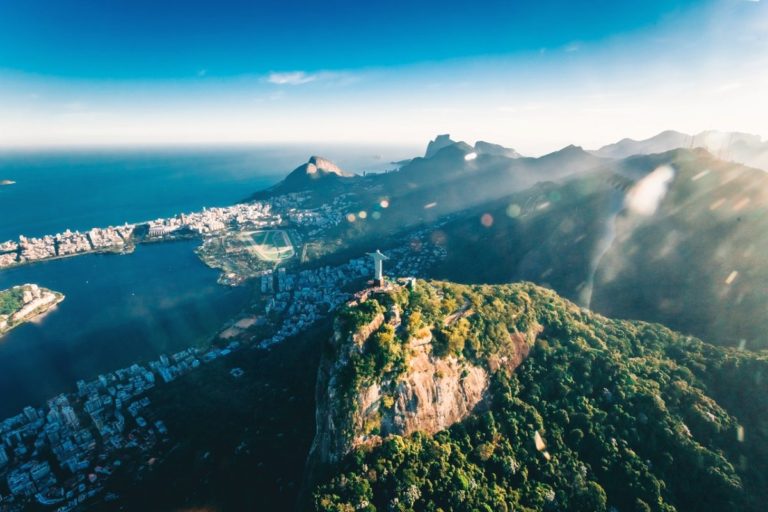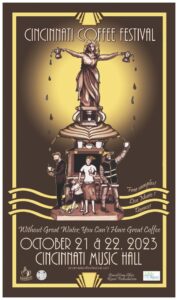Brazil is the world’s fifth largest country, and South America’s largest country.
As you may know, South America is home to some of the best beans in the world.
Just a little south of Brazil is Colombia, debatably the king of coffee.
By Marcelo & Mila.
Affiliate disclosure
This page may contain affiliate links – we may earn a small commission when you make a purchase through these links. This is at no extra cost to you.
But Brazil has as much claim to that title as Colombia.
Brazil has been growing coffee for as long as Colombia and it has a very rich culture which goes back centuries.
Most importantly, Brazil is the biggest grower and exporter of coffee in the world.
For all of you Brazilian coffee lovers, here are some facts to learn and appreciate Brazilian coffee even more.
Get your cup of coffee (which, chances are, came from Brazil) and enjoy the read!
#1: Brazil used to grow as much as 80% of the world’s coffee
Brazil started betting heavily on coffee during the 1800s. During this century the industry was established and then rapidly grew.
Demand for coffee was high and Brazilian coffee was cheap (we’ll explain why later), so demand kept growing.
This peaked in the 1920s with Brazil producing up to 80% of all coffee consumed worldwide.
But by then, many more countries had begun to grow coffee and were competing heavily.
Even so, in the 60s Brazil still managed to grow as much as 60% of all coffee consumed worldwide.
Nowadays, Brazil grows around 30 to 40 percent of all coffee.
4 Coffee Gear & Coffee Recommendations
- Breville Barista Pro – An excellent manual espresso machine for home use
- Philips 3200 Series Espresso Machine – Easy-to-use fully automatic coffee machine for small office or home use
- Rancilio Egro ONE Touch – High capacity fully automatic commercial coffee machine for professional use
- Koa Coffee – Premium hand-picked Hawaiian coffee. Have you tried American coffee yet?
#3: Brazilian Coffee Farms Used Slave Labor
You might be wondering why and how Brazil became such a gigantic producer of coffee back in the day.
The truth is, one of the reasons why the Brazilian coffee industry became so successful was because of slave labor.
As we said, the industry really started to expand in the 19th century, and it was mostly because labor was so cheap.
Thankfully, slavery was finally abolished in Brazil in the year 1888.
Nowadays, Brazilian labor is considered one of the strictest in the world.
That being said, sometimes a few places (smallholders) show up treating their coffee workers practically as slaves; but now these unjust barons are punished for it, and the workers get paid, sooner or later.
#4: Coffee influenced politics
“Coffee with milk politics” is a term used to refer to a certain period in Brazilian political history where coffee magnates had an enormous influence in political decisions.
The coffee industry had grown so far and so big that it had become by far the most lucrative industry in the history of Brazil.
This period lasted around fifty years (1880-1930) and was characterized by coffee magnates having a lot of influence in the government of the era.
#5: Red bourbon is Brazil’s favorite coffee
Red bourbon was introduced to Brazil early during the 19th century, and to this day it is one of the most widely grown types of coffee there.
It is also one of Brazil’s specialties, being one of the best red bourbons in the world.
There is also a unique variation of this coffee that occurs only in Brazil, the yellow bourbon, which has a similar yet slightly sweeter flavor.
#6: Brazilian Coffee is Sustainable
First, what is “sustainable coffee” about?
Sustainable coffee is defined as coffee that, in the course of its production, delivery, or management, benefits both society and the environment, for instance by lowering risks to the environment, pollution, and other adverse effects of resource use.
There are at least five different reasons why Brazilian coffee is considered sustainable.
First, most of the coffee produced in Brazil comes from smallholders (less than 20 hectares).
Secondly, according to INPEV (National Institute for Empty Packaging Processing), 94% of the agrochemical packages are disposed in an environmentally correct way.
In talking about preservation, more than 66% of the Brazilian land is allocated for protected and preserved vegetation, according to EMBRAPA (Brazilian Agricultural Research Corporation).
#7: Coffee Production and Export Brought US $35 billion to Brazil in Only 5 Years
The coffee production chain generates more than 8 million direct and indirect jobs, according to data from the Ministry of Agriculture, Livestock and Supply (MAPA), which explains the dimension of this crop in the Brazilian economy.
According to data released by the Brazilian Federal Government:
From 2012 to 2017, coffee exports reached 200 million bags, which brought US $35 billion to Brazil.
Coffee production is extremely important to Brazil’s economy.
And you’re contributing to it just by getting your daily dose of coffee in the morning.
#8: ‘Orfeu Cafés Especiais’, a Brazilian Coffee, Won The Cup Of Excellence 29 Times In A Row
Brazilian coffee tastes different; it’s delicious, rich in flavor and strong.
But it doesn’t stop there!
Brazilian coffee also wins prizes for their special taste.
In 2021, for the 29th consecutive time, ‘Orfeu Cafés Especiais’ was one of the winners of the Cup of Excellence, a coffee competition considered the true Oscar award of coffees.
It is the most prestigious competition for high quality coffees.
Competitors on the Cup of Excellence go under a level of scrutiny that is unmatched anywhere in the specialty coffee industry.
Orfeu’s microlot of the Geisha variety delighted the judges and was rated at 87.47 points.
#9: Top 3 Best Coffee Brands in Brazil Are…
The most popular coffee brands vary from region to region, but among many coffee brands on Brazilian shelves, these are the best ones, according to data from Proteste:
- Melitta
- Maratá
- 3 Corações.
Honorable mentions are Qualitá, Pimpinela, and Pilão.
These names might not mean a lot to you, but they are a staple on the Brazilian shelves, homes and cups.
If you visit Brazil someday, it’s likely you’ll be served coffee from one of these brands.
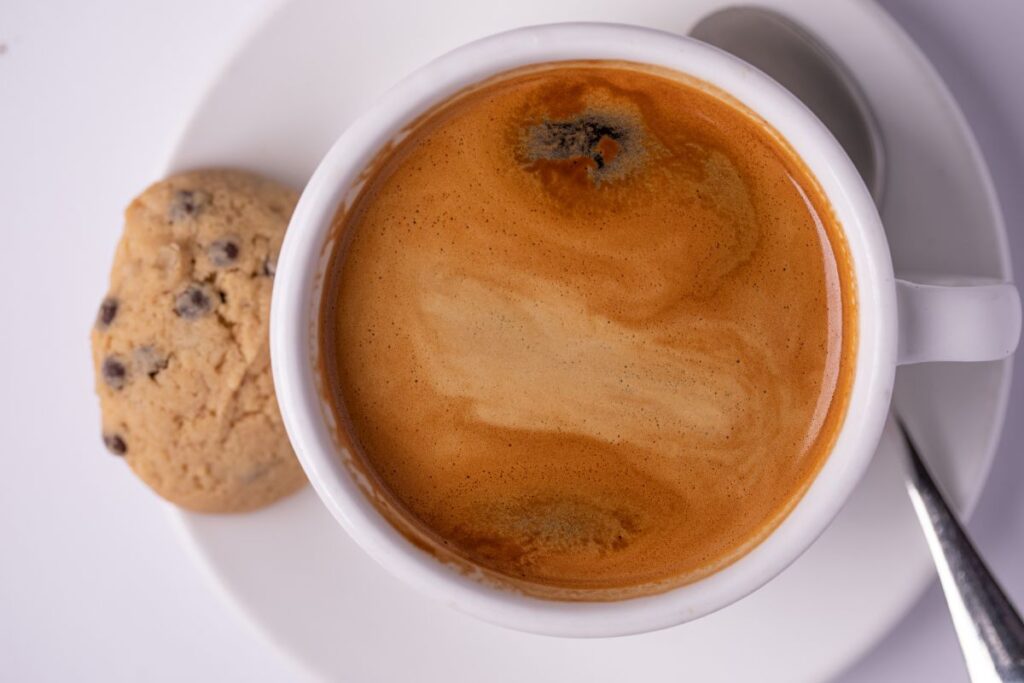
#10: Espresso is The Most Popular Coffee Drink in Brazil
Coffee is appreciated in many forms all around the world, and in Brazil it’s no different.
The espresso coffee drink takes the cake; thanks to its simplicity, it goes well with bread and butter in the morning, right before work.
Many Brazilians even drink espresso without any sugar.
Besides the espresso, some of the most popular coffee types in Brazil are:
- Coffee with milk
- Cappuccino
- Macchiato
- Latte
- Mocha
- Coffee with chantilly.
#11: Minas Gerais Area Is The Biggest Producer Of Coffee In The World
The state of Minas Gerais is the biggest producer of coffee in the world; it’s the place where most of the Brazilian coffee is planted and produced.
Followed by Espírito Santo, São Paulo and Bahia. And the list, of course, goes on.
Minas Gerais, Brazil’s greatest coffee-producing state, produces about 50% of all the coffee consumed there.
Additionally, it is a significant supplier of Brazilian specialty coffee.
Let us take you to a trip through the biggest coffee producing cities of Brazil.
Here are fun facts about some of the Minas Gerais coffee producing areas:
Sul de Minas
The area of ‘Sul de Minas’, or (in English) South of Minas, is located at a high elevation of 950 meters and experiences pleasant temperatures of 22 degrees Celsius annually.
Additionally, it produces about 30% of the nation’s coffee, primarily on tiny farms with an average size of 10 to 100 hectares, but this can vary substantially.
Catua, Mundo Novo, Icatu, Obat, and Catua Rubi are the main varieties.
Regarding the flavor, you’ll often discover that the coffee from this region has a robust body, slightly acidic undertones, and fruity fragrances.
Cerrado de Minas
Cerrado de Minas is the first coffee-producing region in Brazil to get the Designation of Origin seal recognition, giving it prominence comparable to that of well-known wine-producing regions.
It is located between the Alto Paranaiba, Triangulo Mineiro, and the Northwest of Minas Gerais; it is a sizable territory made up of 55 municipalities.
Its farms range in size from enormous estates to medium-sized (2-300 hectare) farms.
This location is ideal for the development of specialty coffees due to its height of 800-1,300m and clearly defined seasons (humid summer and mild to dry winter).
Here, you’ll find Catua and Mundo Novo, and Cerrado de Minas coffees are known for their greater acidity, medium body, and sweetness.
Matas de Minas
Matas de Minas, located in the Atlantic Forest, features an undulating landscape and a mild, humid environment.
The average size of its producing farms is 20 hectares or less.
It is well recognized for producing more specialty coffee, which is often sweet with overtones of citric, chocolate notes, or caramel.
There, the crops Catuaí and Mundo Novo are grown.
#12: Coffee Is Even In Brazil’s Coat Of Arms
You might not know, but in Brazil’s Coat of Arms, you can see coffee leaves.
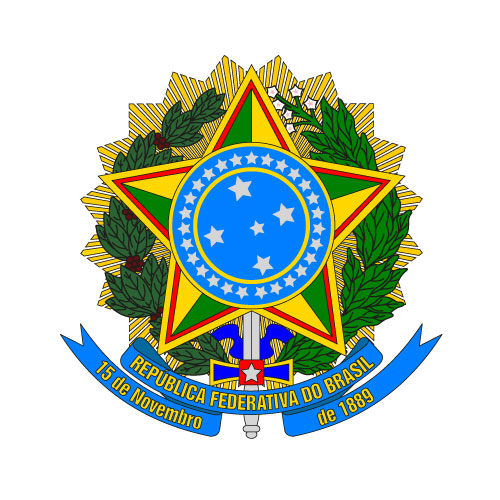
Official Brazilian Coat of Arms (2021 – Source: Official Brazilian government website)
A foreign engineer was hired to design the Brazilian Coat of Arms at the request of marshal Deodoro da Fonseca.
It is made up of a round, azure celestial shield with five black stars arranged inside it in the shape of the Cruzeiro of the South constellation.
Brazil’s 27 states are represented by stars on the shield’s circular sides.
The shield is perched on a huge green/yellow star.
The presence of the soldiers in the republican movement that toppled the monarchy in 1889 is symbolized by a sword held vertically.
The Federal District is represented by a white star in a crimson square on the sword’s hilt.
The official name of Brazil and the date of the Republic’s proclamation are displayed beneath the shield star.
The background of the star-shield-sword set is surrounded by the rays of a 20-pointed golden halo.
Last but certainly not least, a coffee fruited branch adorns one of the set’s sides on the left.
#13: Brazilians love coffee (even more than Americans)
Brazilians love coffee.
It’s not that much of a surprise when you have so much locally grown delicious coffee.
In Brazil, especially in the country side, it’s common to drink coffee in the morning, and again in the end of the day.
It’s called “café da tarde”, or ‘afternoon coffee’.
Brazilians usually drink coffee with bread or couscous.
Coffee’s also probably cheaper in Brazil because it grows right there in their country—although big chains like Starbucks charge around the same price they do here in the US.
However, it might be soon that Brazil turns into the most coffee-loving country in the continent, surpassing the US.
While this is not yet the case, trends show that Brazilians are consuming more and more coffee and will soon consume more cups of coffee per year than the US.
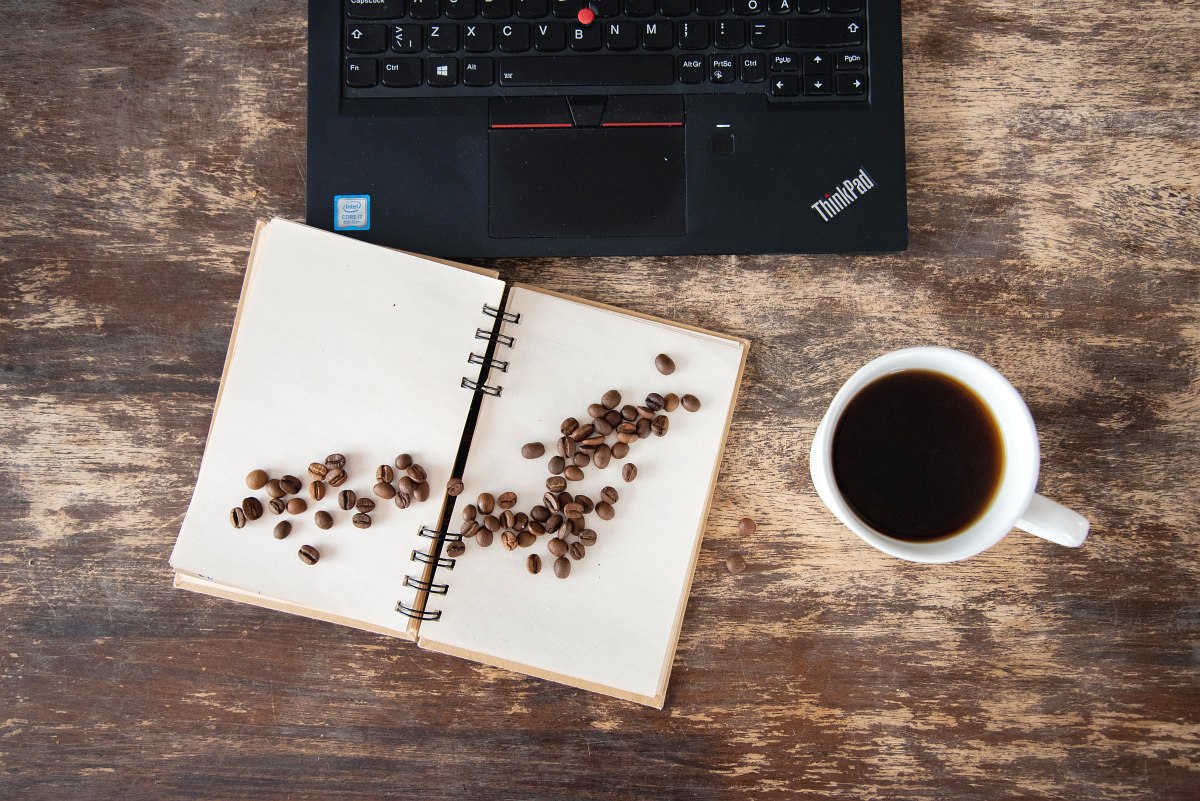
#14: Nearly 20% Of All Coffee Grown in Brazil is Robusta Coffee
What is robusta coffee?
Robusta is a type of coffee that doesn’t have such a subtle flavor as others.
It is mainly grown for use in coffee products, like instant coffee, powdered drinks, and to extract caffeine for other products (like soda).
It is approximated that robusta takes up to 20% of all coffee grown in Brazil.
#15: Around $300 Million Dollars Worth Of Coffee Is Lost Every Year To A Beetle
Coffee is very susceptible to disease and pests, and this is included in calculations all around the world.
Coffee leaf rust is a real problem, but in Brazil there is another, bigger problem: the coffee borer beetle. This small pest can very quickly destroy entire plantations.
Every year, $300 million dollars are lost to the borer beetle, and many more to other coffee-specific diseases like coffee leaf rust.
Brazil’s losses can be shocking when expressed as they are here, but if you put it in perspective, they are about what’s expected.
After all, Brazil produces more (much more) coffee than any other country in the world, so it follows that its yearly losses would also be more than others’.

